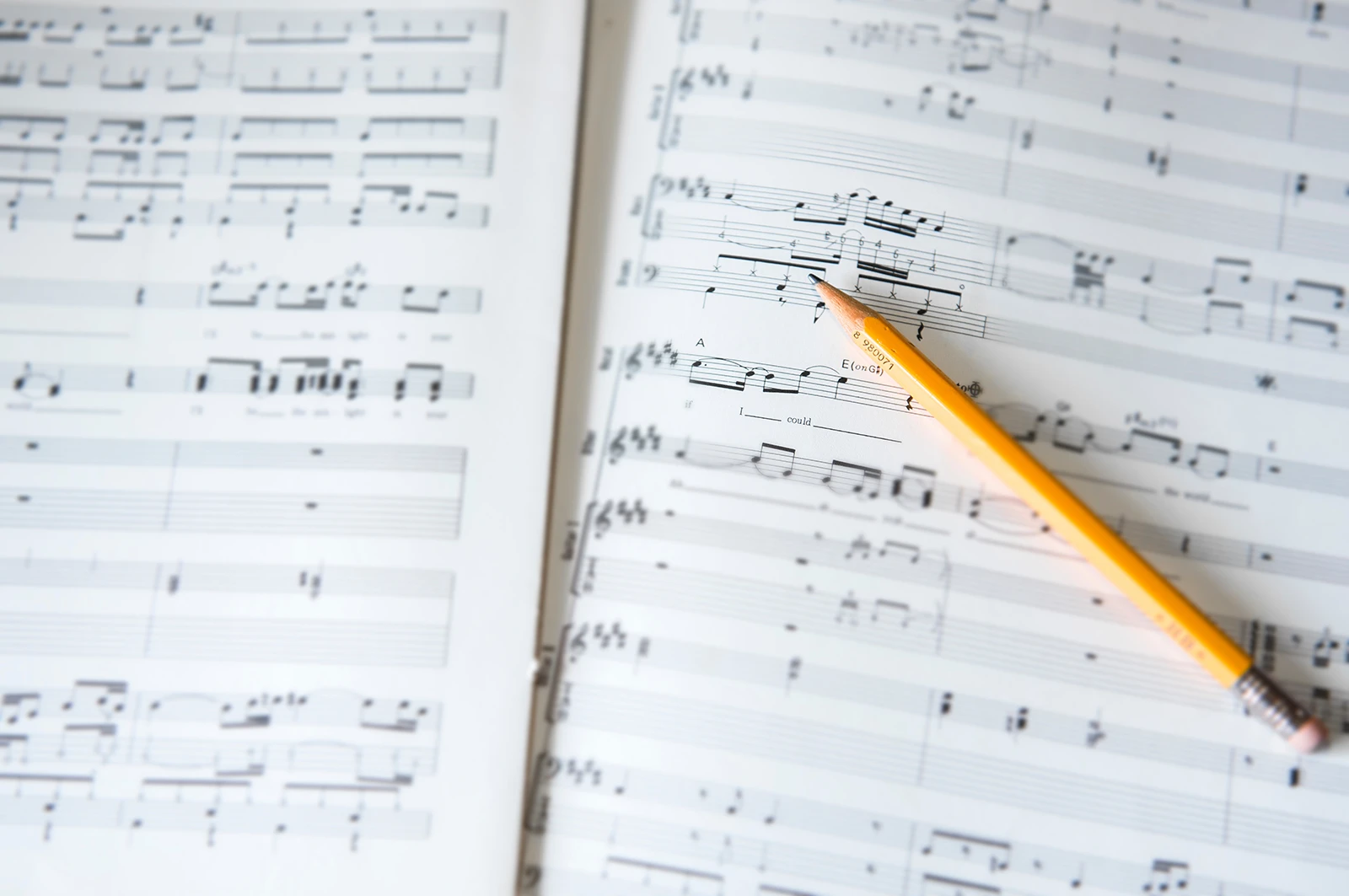As a university band director, one of my favorite things is to work with middle school bands as a guest conductor and clinician. I love the energy and passion of the students, and it brings me back to my own beginnings as a budding bass clarinet player many years ago. I can still remember what my case smelled like, my beat up stick of cork grease, my huge single reed, and the red felt on the inside of the case that was about half ripped out after serving many players on that instrument. Those were great days!!
What follows are some favorite pieces of mine that I keep coming back to over and over when I have the opportunity to work with middle school students. I hope that you might find some of these useful in your own programming – let’s go!
Nordic Sketches – Pierre La Plante
I am indebted to Christopher Hornick, retired director of bands at Connellsville East Junior High School for suggesting this piece to me. It has become one of my favorites to program and seems to fit most middle school bands very well. Pierre La Plante has been on the scene for many years as a respected composer for junior high band. Following studies at the University of Wisconsin-Madison, he spent his teaching career in the public schools of Blanchardville and Prescott, Wisconsin. Many of his works are settings of folk songs, and Nordic Sketches is no exception. The first movement is a straight ahead march, the second movement is a lovely ballad, and the third movement is a joyous polka (who doesn’t love a polka in Pennsylvania!). La Plante has a number of wonderful works in his catalog that I can highly recommend to you – please consult his website for his full catalogue.
Renaissance Suite – Tielman Susato/arr. James Curnow
Full disclosure alert: I love the music of the Renaissance! From the moment I heard recordings from this time period on original instruments I was hooked. Who wouldn’t love the sound of a double reed band with shawms, dulcians, racketts, and curtals? Since this period in music history is where we see the origins of the wind band, I try to take every opportunity I can to teach this music to young musicians when I have the chance. This suite is a set of dances by Tielman Susato, expertly arranged for modern band by James Curnow. For those of you that are familiar with Patrick Dunnigan’s arrangement of the Dansyere, or Robert Margolis’ arrangement of The Battle Pavane, you will immediate recognize one or two of these movements. One of the great things about Curnow’s arrangement (other than the generous cross cueing in several instruments), is that he preserves the concept of the consort principle by have the woodwinds and brass play in alternation throughout. For those of you that are looking for other opportunities/repertoire to teach music of the Renaissance, I highly recommend Fanfare, Ode, and Festival, as well as The Royal Coronation Dances, both arranged by Robert Margolis.
Caprice – William Himes
William Himes has been on the scene for many years as a conductor, composer, and educator. Currently, he is Music Director of The Salvation Army’s Central Territory. He has contributed a number of works for young band that are well crafted and a lot of fun to play! Caprice is a four minute work in ABA form that utilizes the entire band very well, especially the percussion section. Mr. Himes’ catalog for younger musicians is large and diverse – I cannot recommend him strongly enough to you.
Sinfonia IV / Theme and Variations / Blue Alien Accumulation / Train Heading West – Timothy Broege
Timothy Broege has one of the most unique and distinct voices of perhaps anyone else mentioned in this article. Following his education at Northwestern University, he taught elementary music for several years before becoming a full time composer. His works blend together jazz, music of the Renaissance, hymns, and in some cases, twelve tone technique and aleatoric improvisation. What I find most unique about his music is that not only has he composed works for elementary band through college and professional ensembles, but the quality of these works is consistent throughout. He never “writes down” to the ability level of the band, rather, he takes the ability of the players and maximizes what they can do. All of the works listed above are works that I have conducted on several occasions, and have been a great fit with the ensembles I have worked with.
British Masters Suite – arr. John Moss
Where would band repertoire be without the early works of Gustav Holst, Gordon Jacob, and Ralph Vaughan Williams? These British masterpieces are the cornerstones of our repertoire, so I am always on the lookout for opportunities to share these pieces with younger audiences. This suite by John Moss provides middle schools bands an opportunity to experience three classic works: Marching Song (Holst), “Nimrod” from the Enigma Variations (Elgar), and Sine Nomine (Vaughan Williams). These three pieces work wonderfully as a set, particularly the last movement which many will recognize as the hymn tune “For All The Saints”. John Moss has also done a more complete setting of “Marching Song”, which works equally well.
12873465 – Daniel Bukvich
Daniel Bukvich is currently Professor of Percussion and Composition at the University of Idaho. He has written a number of works for band that are inventive as they are unique. His first work for band, “Symphony #1 – In Memoriam Dresden”, was originally his masters thesis – it utilized a chord borrowed from several Duke Ellington jazz charts, and features the use of graphic notation, spoken parts, and instruments being played in unique ways to depict the bombing of the city of Dresden during World War II. The work I am referencing for this article is a march that uses an eight note tone row built from a Bb major scale. Bukvich takes this tone row, and makes use of several serial techniques, as well as augmentation and diminution to create a wonderful introduction to contemporary compositional technique for younger students.
Fanfare, Song, and Fugue – Jack Stamp
From the pen of Jack Stamp comes this grade 2/3 work, originally premiered by Chris Hornick and the Connellsville East Junior High Band. For those that know Jack’s music well, you will recognize the use of polychords, fugue, chordal extensions, and dedicated writing for the percussion section. This is a finely crafted work that presents many opportunities to teach compositional techniques from the twentieth century. I recommend it strongly to you.
Balladair – Frank Erickson
Where would we be without Frank Erickson? I have mentioned Mr. Erickson’s music in this column several times, and for good reason. He created a repertoire of original compositions for young band at a time where there was a severe lack of quality literature for this age group. Balladair continues to be one of my favorite works of his. From the simple melody of the A section, to the beautiful chordal shifts in the development section, there are multiple opportunities to teach form, expression, sound, and style.
Rhythm Stand – Jennifer Higdon
It is rare to have a work for young band written by a Pulitzer Prize winner, Grammy Award winner, and a member of the faculty at the Curtis Institute. This is a fabulous work that your students will love – I guarantee it! A great feature of this piece is that the students use their pencils to hit different parts of the stand, essentially making the band one big percussion section! This work also lends itself well to teaching thematic development, rhythmic independence, and the fact that great pieces are being written by living composers. In my humble opinion, we need to get another piece from her.
Coming next issue: celebrating Pennsylvania composers and their works for band. Best wishes for a great year of music making!







